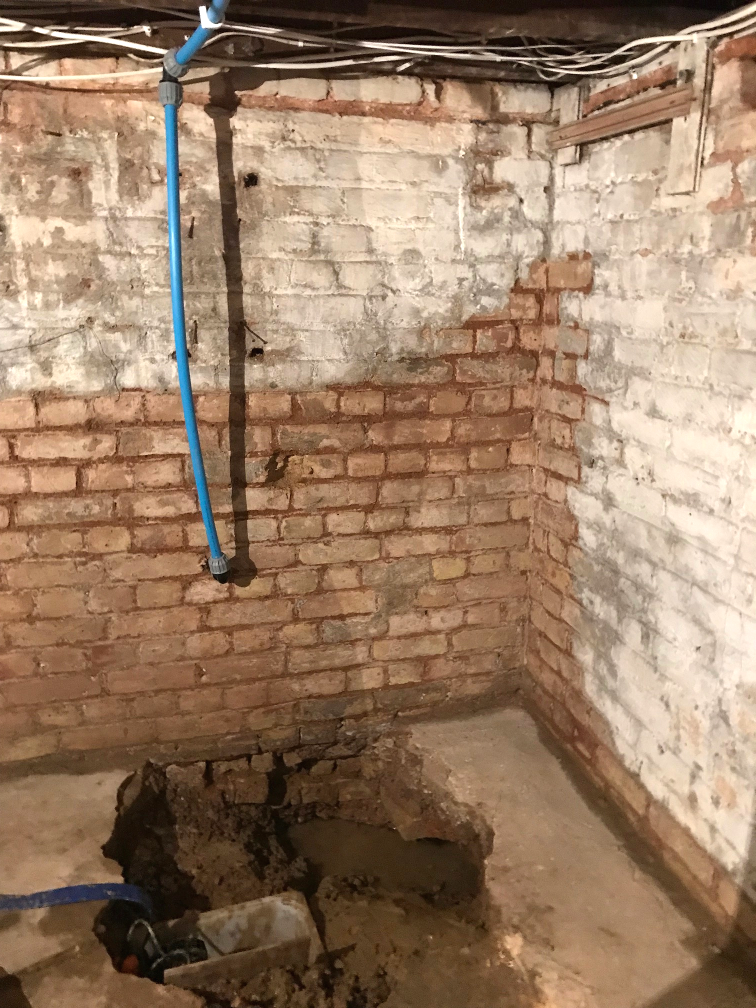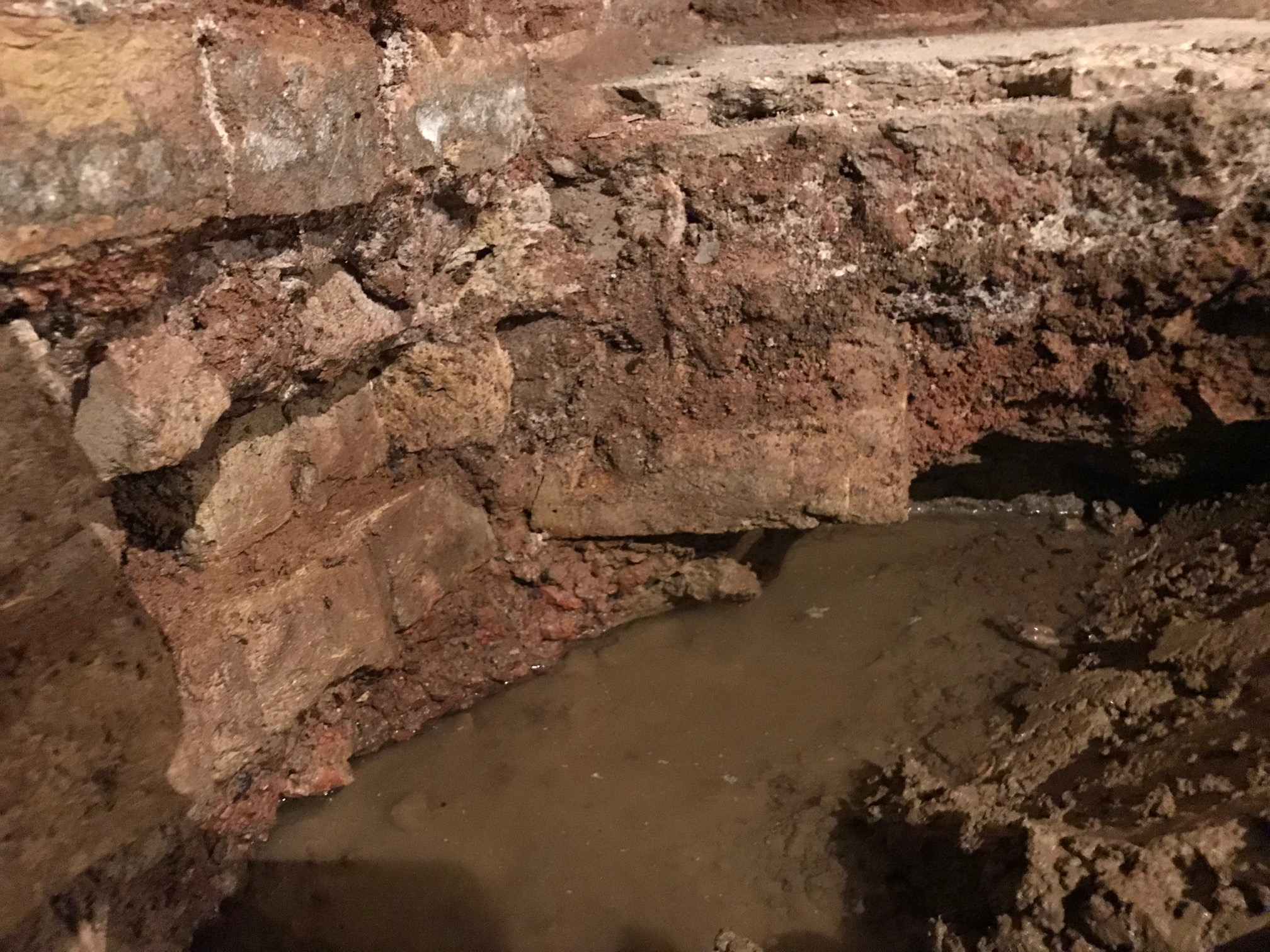- Joined
- 21 Nov 2018
- Messages
- 3
- Reaction score
- 0
- Country

Hello!
Around 10+ years ago the previous owners of our 120 year old Victorian house had planned to convert the cellar into a extended basement, they had plans drawn up, a planning application put together, a number of quotes and even had dug 5 trial pits in the cellar - they decided not to proceed for whatever reason.
The cellar is around 4.5 x 6 meters with around 1.75m of headroom. The floor is a slab which looks like it's been down 30 years +.
Fast forward 10 years and I am filling in the pits properly (they had filled them with broken tiles...) - on one of the pits dug against an external wall I am concerned to see that not only are the footings exposed but in a section of the wall (just under a meter wide) somebody has cut off the footing bricks and taken a few out for good measure..!
You can see the pit against the wall here (I'm also in the process of cleaning the brick wall as you can see)
Looking closer you can see one of the footing bricks left intact (to the right) - note also some ground water from recent rains.
And close up, the full horror... the external wall is to the left of the picture
I don't want to just backfill the hole with london clay, I'd like to make good as best I can the damage done to the footings.
What I was thinking is to very carefully clean up the hole being careful to to move any undisturbed ground. Then fill with concrete up to the level of the first brick but use a form so that the concrete does not extend past the end of that remaining footing brick. Then to use a lime mortar to repoint the remaining but cut footing bricks and then fill in the gaps where bricks have been removed also with lime mortar.
Does that sound reasonable?
I wasn't sure whether I should concrete up to the brick or to just below it (say 50mm under) and dry pack the gap.
I originally thought about using a lime concrete (NHL5 + aggregate & sand) - partly because the bottom of the footings does have ground water sometimes (when it rains more than a little bit).
Around 10+ years ago the previous owners of our 120 year old Victorian house had planned to convert the cellar into a extended basement, they had plans drawn up, a planning application put together, a number of quotes and even had dug 5 trial pits in the cellar - they decided not to proceed for whatever reason.
The cellar is around 4.5 x 6 meters with around 1.75m of headroom. The floor is a slab which looks like it's been down 30 years +.
Fast forward 10 years and I am filling in the pits properly (they had filled them with broken tiles...) - on one of the pits dug against an external wall I am concerned to see that not only are the footings exposed but in a section of the wall (just under a meter wide) somebody has cut off the footing bricks and taken a few out for good measure..!
You can see the pit against the wall here (I'm also in the process of cleaning the brick wall as you can see)
Looking closer you can see one of the footing bricks left intact (to the right) - note also some ground water from recent rains.
And close up, the full horror... the external wall is to the left of the picture
I don't want to just backfill the hole with london clay, I'd like to make good as best I can the damage done to the footings.
What I was thinking is to very carefully clean up the hole being careful to to move any undisturbed ground. Then fill with concrete up to the level of the first brick but use a form so that the concrete does not extend past the end of that remaining footing brick. Then to use a lime mortar to repoint the remaining but cut footing bricks and then fill in the gaps where bricks have been removed also with lime mortar.
Does that sound reasonable?
I wasn't sure whether I should concrete up to the brick or to just below it (say 50mm under) and dry pack the gap.
I originally thought about using a lime concrete (NHL5 + aggregate & sand) - partly because the bottom of the footings does have ground water sometimes (when it rains more than a little bit).
Last edited:



